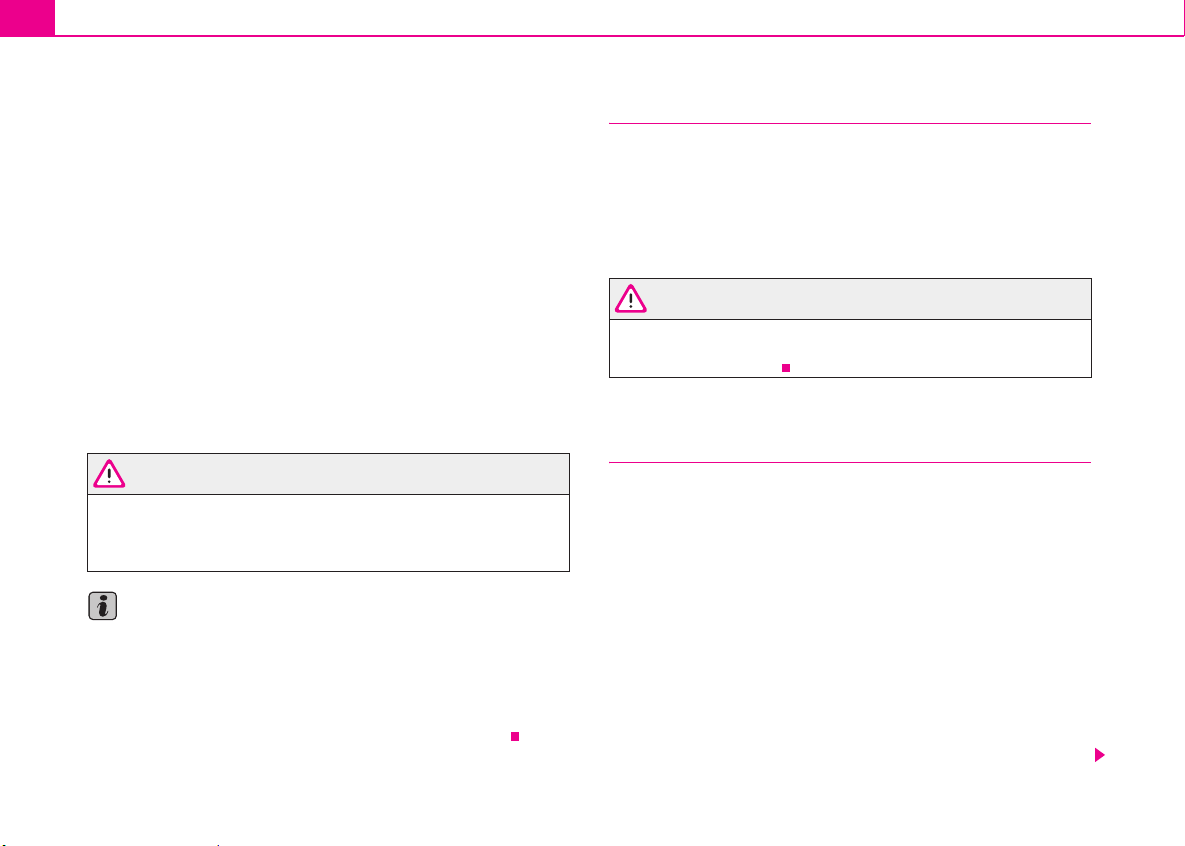Loading ...
Loading ...
Loading ...

Intelligent Technology216
The TCS warning light ⇒ page 39 lights up in the instrument cluster when
there is a fault on the TCS.
Switching off
You can switch the TCS off and on again as you wish by pressing the
button ⇒ page 215, fig. 181. The TCS warning light ⇒ page 39 lights up in
the instrument cluster when the TCS is switched off.
The TCS should normally always be switched on. It may be good practice
in certain exceptional cases, such as when you wish to have wheel slip,
to switch off the system.
Examples:
• when driving with snow chains
• when driving in deep snow or on a loose surface
• when it is necessary to rock a car free when it has become stuck
then you should switch on the TCS again.
WARNING
You should always adjust your style of driving to the conditions of
the road surface and the traffic situation. The increased safety
offered must not tempt you to take greater risks than otherwise -
risk of an accident!
Note
• All four wheels must be fitted with the same tyres in order to achieve
problem-free operation of the TCS. Differing rolling circumferences of the
tyres can lead to an undesirable reduction in the engine output.
• Changes to vehicle (e.g. on engine, on the brakes, on chassis or other
assignment of tyres and wheels) can influence the function of the TCS
⇒ page 270, “Accessories, changes and replacement of parts”.
Driver-steering recommendation*
The driver-steering recommendation is an additional function of the elec-
tronic stability programme (ESP). This function indicates to the driver in
critical situations by means of slight steering wheel impulses the direction
evaluated by the system, in which the vehicle must be steered, so that it
stabilizes. The driver-steering recommendation is active when braking
sharply on different road surfaces and on the right and left vehicle side.
WARNING
Even with this additional function the vehicle cannot be steered
automatically! The driver is furthermore fully reponsible for the
steering of the vehicle!
Brakes
What has a negative effect on braking efficiency?
Wear-and-tear
Wear-and-tear to the brake pads is greatly dependent on the operating
conditions of the vehicle and your style of driving. Particularly if you drive
a great deal in towns and over short distances or if you adopt a sporty style
of driving, it may be necessary to have the thickness of the brake pads
inspected at a specialist garage between the service inspections.
Wet roads or road salt
There may be a certain delay before the brakes take full effect under
certain conditions such as when driving through water, during heavy rain
showers or after the vehicle has been washed in an automatic vehicle
wash, since the brake discs and brake pads may be moist or even have a
coating of ice on them in winter. You should dry the brakes as soon as
s24s
.
book
Page
216
Thursday
,
November
24
,
2005
12:27
PM
Loading ...
Loading ...
Loading ...